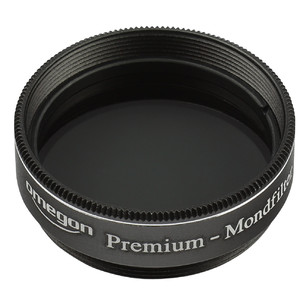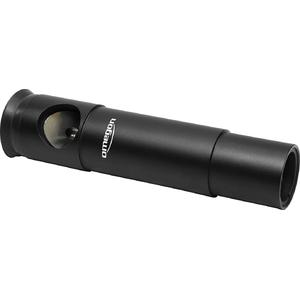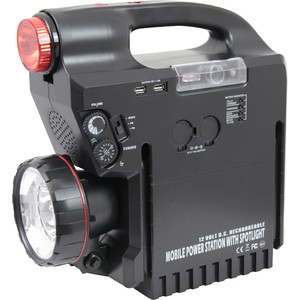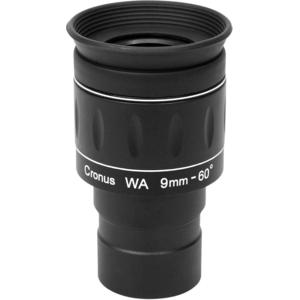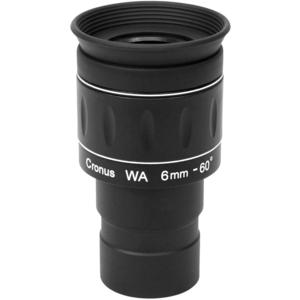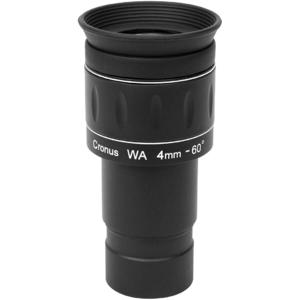Omegon RC carbon-fibre truss-tube telescope - professional astrophotography for your observatory
If astrophotography is your passion and you are looking for exactly the right telescope for your observatory, then a Richey-Chretien telescopes is ideal. Their large mirror optics produce a nearly perfect image. The two hyperbolic mirrors provide a large, well-illuminated and coma-free image from the compact design. The result - perfect stellar images right out to the edge of the field of view. That is also the reason why countless professional observatories and institutes swear by this system.
Now you can use this professional technology for your own observatory too! Omegon RC telescopes are so well-balanced that they can be accommodated in even smaller observatories.
The advantages in a nutshell
- hyperbolic mirrors - extremely sharp image, large field of view without need of a corrector
- quartz mirrors - for stable focus without the need to refocus, as the image remains sharp
- suitable for large-format CCD cameras - approx. 60mm of illumination
- stiffened carbon-fibre truss tube system
- high reflection - 92-94% dielectric reflective coating for bright, high-contrast observing and astronomy photos
- rapid cool-down thanks to open design
- high-performance electric fans - minimize tube currents and accelerate cool-down of the optics
Hyperbolic mirror for a better image
RC telescopes have hyperbolic main and secondary mirrors. They do not use spherical mirrors, such as in Schmidt-Cassegrain systems. As a result, the RC design is clearly superior - the optics provide a significantly wider image field with considerably less imaging aberrations.
A very high image quality over a wide field of view - that is the purpose of these telescopes. That is why they are always the first choice for astrophotography. This is the reason why RC systems are the right choice for large CCD cameras. This means that your photos are sharp right out to the edge of the field of view, even without using a corrector, to create beautiful photos of the night sky.
More usable in an extended spectral range
RC telescopes have no lenses in the beam path. This is a big advantage! As a result, problems with refraction effects - such as chromatic aberration or dispersion - do not arise. The usable range of the spectrum beyond the visible light is greater, allowing you to also use your camera to penetrate the UV and infrared ranges - which are often very interesting.
Quartz main mirror
You have probably experienced this yourself if you are an experienced astrophotographer - focus drift during long exposures. This is extremely annoying! The advantage with this model is its two quartz mirrors - these undergo virtually no thermal expansion and so provide not just a fantastic image but, once focused, will remain focused for the entire night.
Both mirrors on the telescope have 92-94% reflection coating. This means high-contrast and bright images. Compared to a 'normal' telescope mirror with around an 88% reflective coating, it reflects up to 17% more light.
Get started observing faster - main mirror fan
Just a quiet, unobtrusive hum, but what an effect! - the built-in 12V fan means 50% faster cool-down of your main mirror. This allows your telescope to reach optimum image quality more rapidly, so you do not have to wait for so long.
Carbon-fibre truss-tube design OTA
Most professional telescopes use a truss-tube design and this telescope enjoys exactly the same advantages. The carbon-fibre tubes are stiff, light and especially thermally stable - another reason why there is no focus drift. Natural ventilation is better with a truss-tube design and prevents the system from developing its own microclimate.
Large unobstructed aperture: 3” focuser
The back end is especially important: the bearing-mounted 3” Linear Crayford Focuser gives you enough space to illuminate even large format image fields without vignetting.
A hybrid of Crayford and guide rail offers you the effortlessness of a Crayford focuser with the stability of a good rack and pinion focuser.
- Always the perfect object alignment: focuser is completely rotatable
- Reducer from 2” to 1.25” with integrated compression ring
- Fine adjustment for the perfect focus: 1:10 reduction for minimal focus setting
- Setting scale so you can quickly find your focus again
- Highly stable: no movement so the camera remains perfectly aligned to the optical axis and the picture remains sharp
Connections: M74 (male), M74 - 2" reduction (25mm optical length), 2" - 1.25" reduction (10mm opt. length)
Focuser can be independently aligned
Six collimating screws allow you to precisely align the 3" focuser with respect to the mirror optics, thus ensuring the following - no slipping, the eyepiece or your camera sits on the optical axis. The focuser even has a genuine 3" diameter - this should not to be taken for granted, as many similar focusers taper off toward the eyepiece end.
A better image than an SC telescope
To start with, an RC telescope is completely different to the classic SC or Maksutov design. It has no corrector plate and is hence an open system that adapts faster to the ambient temperature than an SC telescope. The absence of a front corrector plate also means that the telescope provides brighter images with no risk of internal reflections. Ritchey-Chretien systems are the most highly corrected two-mirror telescopes available. Their edge-to-edge image sharpness is impressive, so it is no wonder that practically all large research telescopes use this design of telescope in their professional observatories.
Now affordable
Making hyperbolic mirrors is both a science and an art. Up to only a few years ago, RC telescopes were among the most expensive telescopes in the world - only international institutions used them for research. But this technology is also now also affordable for experienced amateur astronomers.

